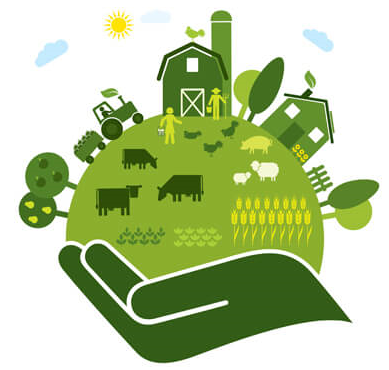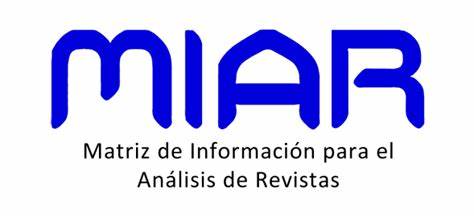Indicators for agroecological transition: Food security, nutrition, well-being, promotion of a sustainable food model
DOI:
https://doi.org/10.54502/msuceva.v3n1a10Palabras clave:
Agroecology, food safety, sustainable food system, gastronomic diversityResumen
Agroecology is a viable alternative confronting the impressive model of industrial agriculture. To project the concept of Agroecology beyond theoretical definitions to practical and quantifiable principles, it is necessary to have analysis, communication and evaluation tools that support and allow the evaluation of positions. Indicators are quantifiable tools that make the obtention of numerical variables possible to compare the different models. This study aims to establish a proposal of quantifiable indicators to evaluate the direct impact of aspects related to food and nutritional quality, responding to the demand for an integrated evaluation of agroecological systems, thus improving the tools for calculating current indicators. The proposed parameters cover aspects that have a greater or lesser impact on the daily diet, such as the variability of the foods that make up the dish, their contribution to food safety, the nutritional composition and bioactive components, organoleptic aspects, degree of processing and transformation of the food consumed, environmental aspects that influence the production model and their influence on human well-being. As well as parameters of the social sphere, such as the impact on the economy of scale, on attributes of proximity, temporality, as well as indicators related to social justice. The proposal can help to obtain assessment before or after the implementation of agricultural policies towards the agroecological transition, allowing self-assessment, and provide verifiable data after a change in agricultural policies when redesigning or introducing agroecological strategies.
Descargas
Métricas
Citas
Wezel A, Bellon S, Doré T, Francis C, Vallod D, David C. Agroecology as a science, a movement and a practice. A review. Agron Sustain Dev. 2009; 29(4):503-515. http://doi.org/10.1051/agro/2009004 DOI: https://doi.org/10.1051/agro/2009004
Gliessman SR. Agroecology: A Growing Field. Agroecol. Sustain. Food Syst. 2015; 39:1-2. http://doi.org/10.1080/21683565.2014.965869 DOI: https://doi.org/10.1080/21683565.2014.965869
FAO. Guiding the transition to sustainable food and agricultural. Systems. The 10 elements of agroecology; 2018. Rome. Italy. http://www.fao.org/3/i9037en/i9037en.pdf.
Loconto AM, Fouilleux E. Defining agroecology: Exploring the circulation of knowledge in FAO’s Global Dialogue. Int. J. Sociol. Agric. Food. 2019; 25(2):116-137. http://doi.org/10.48416/ijsaf.v25i2.27
Herren HR, Hilbeck A, Hoffmann U, Home R, Levidow L, Müller A, Nelson E, Oehen B, Pimbert, M. Feeding the People-Agroecology for Nourishing the World and Transforming the Agri-Food Systems. Brussels, Belgium. IFAOM EU Group. 2015. Angelika Hilbeck and Bernadette Oehen editors.
De Schutter O. Agroecology and the right to food. Report presented at the 16th Session of the United Nations Human Rights Council [A/HRC/16/49]. 2011. March 8. United Nations Special Rapporteur on the Right to Food. https://www2.ohchr.org/english/issues/food/docs/a-hrc-16-49.pdf.
Gliessman SR. (Ed.) Agroecology: researching the ecological basis for sustainable agriculture. Ecological Studies Series No. 78; 1990. New York: Springer. DOI: https://doi.org/10.1007/978-1-4612-3252-0
Migliorini P, Gkisakis V, Gonzalvez V, Raigón MD, Bàrberi P. Agroecology in Mediterranean Europe: Genesis, state and perspectives. Sustainability. 2018; 10(8):2724. https://doi.org/10.3390/su10082724 DOI: https://doi.org/10.3390/su10082724
Tittarelli F, Saba A, Di Pierro M, Ciaccia C. Food Citizenship as an Agroecological Tool for Food System Re-Design. Sustainability. 2022; 14(3):1590. https://doi.org/10.3390/su14031590 DOI: https://doi.org/10.3390/su14031590
Schwarz G, Vanni F, Miller D, Helin J, Pražan J, Albanito F, Fratila M, Galioto F, Gava O, Irvine K, Landert J, Linares Quero A, Mayer A, Monteleone D, Muller A, Röös E, Smyrniotopoulou A, Vincent A, Vlahos G, Zīlāns A. Exploring sustainability implications of transitions to Agroecology: a transdisciplinary perspective. EuroChoices, 2022; 21(3):37-47. https://doi.org/10.1111/1746-692X.12377 DOI: https://doi.org/10.1111/1746-692X.12377
Francis C, Lieblein G, Gliessman S, Breland TA, Creamer N, Harwood R, Salomonsson L, Helenius J, Rickerl D, Salvador R, Wiedenhoeft M, Simmons S, Allen P, Altieri M, Flora C, Poincelot R. Agroecology: the ecology of food systems. J. Sustain. Agric. 2003; 22(3):99-118. https://doi.org/10.1300/J064v22n03_10 DOI: https://doi.org/10.1300/J064v22n03_10
International Assessment of Agricultural Knowledge, Science and Technology for Development. Agriculture at a crossroads. 2009. Washington, DC: Island Press.
Dahl AL. Achievements and gaps in indicators for sustainability. Ecol. Indic. 2012; 17:14-19. https://doi.org/10.1016/j.ecolind.2011.04.032 DOI: https://doi.org/10.1016/j.ecolind.2011.04.032
Betancourt M. The effect of Cuban agroecology in mitigating the metabolic rift: A quantitative approach to Latin American food production. Glob. Environ. Change. 2020;63:102075.
https://doi.org/10.1016/j.gloenvcha.2020.102075 DOI: https://doi.org/10.1016/j.gloenvcha.2020.102075
Boeraeve F, Dendoncker N, Cornélis, JT, Degrune F, Dufrêne, M. Contribution of agroecological farming systems to the delivery of ecosystem services. J. Environ. Manage. 2020; 260:109576.
https://doi.org/10.1016/j.jenvman.2019.109576 DOI: https://doi.org/10.1016/j.jenvman.2019.109576
Migliorini P, Galioto F, Chiorri M, Vazzana C. An integrated sustainability score based on agro-ecological and socioeconomic indicators. A case study of stockless organic farming in Italy. Agroecol. Sustain. Food Syst. 2018; 42(8):859-884. https://doi.org/10.1080/21683565.2018.1432516 DOI: https://doi.org/10.1080/21683565.2018.1432516
Chaparro-Africano AM. Toward generating sustainability indicators for agroecological markets. Agroecol. Sustain. Food Syst. 2019; 43(1):40-66. https://doi.org/10.1080/21683565.2019.1566192 DOI: https://doi.org/10.1080/21683565.2019.1566192
Mottet A, Bicksler A, Lucantoni D, DeRosa F, Scherf B, Scopel E, López-Ridaura S, Gemmil-Herren B, Bezner Kerr R, Sourisseau JM, Petersen P, Chotte JL, Loconto A, Tittonell P. Assessing transitions to sustainable agricultural and food systems: A tool for agroecology performance evaluation (TAPE). Front. Sustain. Food Syst. 2020; 4:579154. https://doi.org/10.3389/fsufs.2020.579154 DOI: https://doi.org/10.3389/fsufs.2020.579154
HLPE. Agroecological and other innovative approaches for sustainable agriculture and food systems that enhance food security and nutrition. 2019. A report by the High-Level Panel of Experts on Food Security and Nutrition of the Committee on World Food Security, Rome. Available to: http://www.fao.org/3/ca5602en/ca5602en.pdf
Stratton AE, Wittman H, Blesh J. Diversification supports farm income and improved working conditions during agroecological transitions in southern Brazil. Agron. Sustain. Dev. 2021; 41(3):35.
https://doi.org/10.1007/s13593-021-00688-x DOI: https://doi.org/10.1007/s13593-021-00688-x
Bernasconi C, Demetrio PM, Alonso LL, Mac Loughlin TM, Cerdá E, Sarandón SJ, Marino DJ. Evidence for soil pesticide contamination of an agroecological farm from a neighboring chemical-based production system. Agric. Ecosyst. Environ. 2021; 313:107341.
https://doi.org/10.1016/j.agee.2021.107341 DOI: https://doi.org/10.1016/j.agee.2021.107341
Barrios E, Gemmill-Herren B, Bicksler A, Siliprandi E, Brathwaite R, Moller S, Batello C, Tittonell P. The 10 Elements of agroecology: Enabling transitions towards sustainable agriculture and food systems through visual narratives. Ecosystems and People, 2020; 16 (1):230-247. https://doi.org/10.1080/26395916.2020.1808705 DOI: https://doi.org/10.1080/26395916.2020.1808705
Audette Y, Congreves KA, Schneider K, Zaro GC, Nunes AL, Zhang H, Voroney RP. The effect of agroecosystem management on the distribution of C functional groups in soil organic matter: A review. Biol. Fertil. Soils. 2021; 57:881-894. https://doi.org/10.1007/s00374-021-01580-2113 DOI: https://doi.org/10.1007/s00374-021-01580-2
Swinburn BA, Kraak VI, Allender S, Atkins VJ, Baker PI, Bogard JR, Brinsden H, Calvillo A, De Schutter O, Devarajan R, Ezzati M, Friel S, Goenka S, Hammond RA, Hastings G, Hawkes C, Herrero M, Hovmand PS, Howden M, Jaacks LM, Kapetanaki AB, Kasman M, Kuhnlein HV, Kumanyika SK, Larijani B, Lobstein T, Long MW, Matsudo VKR, Mills SDH, Morgan G, Morshed A, Nece PM, Pan A, Patterson DW, Sacks G, Shekar M, Simmons GL, Smit W, Tootee A, Vandevijvere S, Waterlander WE, Wolfenden L, Dietz WH. The global syndemic of obesity, undernutrition, and climate change. The Lancet. 2019; 393(10173):791-846. https://doi.org/10.1016/S0140-6736(18)32822-8 DOI: https://doi.org/10.1016/S0140-6736(18)32822-8
Béné C. Why the great food transformation may not happen–A deep-dive into our food systems’ political economy, controversies and politics of evidence. World Development. 2022; 154:105881.
https://doi.org/10.1016/j.worlddev.2022.105881 DOI: https://doi.org/10.1016/j.worlddev.2022.105881
Elechi JOG, Nwiyi IU, Adamu CS. Global food system transformation for resilience. In: Food Systems Resilience, 21. IntechOpen. 2022. UK. https://doi.org/10.5772/intechopen.102749 DOI: https://doi.org/10.5772/intechopen.102749
Fanzo J, Rudie C, Sigman I, Grinspoon S, Benton TG, Brown ME, Covic N, Fitch K, Golden CD, Grace D, Hivert MF, Huybers P, Jaacks LM, Masters WA, Nisbett N, Richardson RA, Singleton CR, Webb P, Willett WC. Sustainable food systems and nutrition in the 21st century: a report from the 22nd annual Harvard Nutrition Obesity Symposium. Am. J. Clin. Nutr. 2022; 115(1):18-33. https://doi.org/10.1093/ajcn/nqab315 DOI: https://doi.org/10.1093/ajcn/nqab315
Ae. Indicadores de la producción ecológica. 2021. Revista Ae, 42. Ed. SEAE. Valencia, España.
Madigan RJ, Brosamer, JJ. Holistic grading of written work in introductory psychology: Reliability, validity, and efficiency. Teach. Psychol. 1991; 18(2):91-94. https://doi.org/10.1207/s15328023top1802_5 DOI: https://doi.org/10.1207/s15328023top1802_5
Toledo Á, Burlingame B. Biodiversity and nutrition: A common path toward global food security and sustainable development. J. Food Compost. Anal. 2006; 19(6-7):477-483. https://doi.org/10.1016/j.jfca.2006.05.001 DOI: https://doi.org/10.1016/j.jfca.2006.05.001
Locke A, Schneiderhan J, Zick SM. Diets for health: Goals and guidelines. Am. Fam. Physician. 2018; 97(11):721-728.
Gandy M. Zoonotic urbanisation: Multispecies urbanism and the rescaling of urban epidemiology. Urban Studies. 2023; 00420980231154802. https://doi.org/10.1177/00420980231154802 DOI: https://doi.org/10.1177/00420980231154802
Alsanius BW, Von Essen E, Hartmann R, Vagsholm I, Doyle O, Schmutz U, Stützel H, Fricke A, Dorais M. The “one health”-concept and organic production of vegetables and fruits. Acta Hortic. 2019; 1242:1-14. https://dx.doi.org/10.17660/ActaHortic.2019.1242.1 DOI: https://doi.org/10.17660/ActaHortic.2019.1242.1
Raigón MD, Figueroa M, García-Martínez MD, Rodríguez-Burruezo A, Fita AM, Prohens J. Fruit Quality of Organic Food: Experimental Evidence. Bulletin of University of Agricultural Sciences & Veterinary Medicine. 2011; 68(1):267-272.
Biesalski HK, Dragsted LO, Elmadfa I, Grossklaus R, Müller M, Schrenk D, Walter P, Weber P. Bioactive compounds: Definition and assessment of activity. Nutrition. 2009; 25(11-12):1202-1205. https://doi.org/10.1016/j.nut.2009.04.023 DOI: https://doi.org/10.1016/j.nut.2009.04.023
Gustavsen GW, Hegnes AW. Individuals’ personality and consumption of organic food. J. Clean. Prod. 2020; 245:118772. https://doi.org/10.1016/j.jclepro.2019.118772 DOI: https://doi.org/10.1016/j.jclepro.2019.118772
Sant'Anna V, Gurak PD, Marczak LDF, Tessaro IC. Tracking bioactive compounds with colour changes in foods–A review. Dyes Pigm. 2013; 98(3):601-608. https://doi.org/10.1016/j.dyepig.2013.04.011 DOI: https://doi.org/10.1016/j.dyepig.2013.04.011
Hemmerling S, Asioli D, Spiller A. Core Organic Taste: Preferences for Naturalness-Related Sensory Attributes of Organic Food Among European Consumers. J. Food Prod. Mark. 2016; 22(7):824-850. https://doi.org/10.1080/10454446.2015.1121428 DOI: https://doi.org/10.1080/10454446.2015.1121428
Raffo A, Baiamonte I, Bucci R, D'Aloise A, Kelderer M, Matteazzi A, Moneta E, Nardo N, Paoletti F, Peparaio M. Effects of different organic and conventional fertilisers on flavour related quality attributes of cv. Golden Delicious apples. LWT-Food Sci. Technol. 2014; 59(2):964-972. https://doi.org/10.1016/j.lwt.2014.06.045 DOI: https://doi.org/10.1016/j.lwt.2014.06.045
Tobin R, Moane S, Larkin T. Sensory evaluation of organic and conventional fruits and vegetables available to Irish consumers. International J. Food Sci. Technol. 2013; 48(1):157-162. https://doi.org/10.1111/j.1365-2621.2012.03172.x DOI: https://doi.org/10.1111/j.1365-2621.2012.03172.x
Monteiro CA, Cannon G, Lawrence M, Costa Louzada MD, Pereira Machado P. Ultra-processed foods, diet quality, and health using the NOVA classification system. 2019. Rome, FAO.
Shen YJ, Ok T, Utsumi N, Kanae S, Hanasaki N. Projection of future world water resources under SRES scenarios: water withdrawal. Hydrol. Sci. J. 2008; 53 (1):11-33. https://doi.org/10.1623/hysj.53.1.112 DOI: https://doi.org/10.1623/hysj.53.1.11
Donner M, Verniquet A, Broeze J, Kayser K, De Vries H. Critical success and risk factors for circular business models valorising agricultural waste and by-products. Resour. Conserv. Recycl. 2021; 165:105236. https://doi.org/10.1016/j.resconrec.2020.105236 DOI: https://doi.org/10.1016/j.resconrec.2020.105236
Jarzębowski S, Bourlakis M, Bezat-Jarzębowska A. Short food supply chains (SFSC) as local and sustainable systems. Sustainability. 2020; 12(11):4715. https://doi.org/10.3390/su12114715 DOI: https://doi.org/10.3390/su12114715
Ong TWY, Liao W. Agroecological transitions: a mathematical perspective on a transdisciplinary problem. Front. Sustain. Food. 2020; 4(91). https://doi.org/10.3389/fsufs.2020.00091 DOI: https://doi.org/10.3389/fsufs.2020.00091
González de Molina M. Strategies for scaling up agroecological experiences in the European Union. Int. J. Agric. Nat. Resour. 2020; 47(3):187-203. https://doi.org/10.7764/ijanr.v47i3.2257 DOI: https://doi.org/10.7764/ijanr.v47i3.2257
De Schutter O, Campeau C. Equity, equality and non-discrimination to guide food-system reform. 2018. UNSCN-News 45:7-14.
Springmann M, Clark M, Mason-D’Croz D, Wiebe K, Bodirsky BL, Lassaletta L, de Vries W, Vermeulen SJ, Herrero M, Carlson KM, Jonell M, Troell M, DeClerck F, Gordon LJ, Zurayk R, Scarborough P, Rayner M, Loken B, Fanzo J, Godfray HCJ, Tilman D, Rockström J, Willett W. Options for keeping the food system within environmental limits. Nature. 2018; 562(7728):519-525. https://doi.org/10.1038/s41586-018-0594-0 DOI: https://doi.org/10.1038/s41586-018-0594-0
Bui S, Cardona A, Lamine C, Cerf M. Sustainability transitions: Insights on processes of niche-regime interaction and regime reconfiguration in agri-food systems. J. Rural Stud. 2016; 48:92-103.
https://doi.org/10.1016/j.jrurstud.2016.10.003 DOI: https://doi.org/10.1016/j.jrurstud.2016.10.003
Bellon S, Penvern S. Organic Farming, Prototype for Sustainable Agricultures. 2014. Springer Publishers, Dordrecht, London, UK. pp 489. DOI: https://doi.org/10.1007/978-94-007-7927-3
Dwivedi S, Goldman I, Ortiz R. Pursuing the potential of heirloom cultivars to improve adaptation, nutritional, and culinary features of food crops. Agronomy. 2019; 9(8):441.
https://doi.org/10.3390/agronomy9080441 DOI: https://doi.org/10.3390/agronomy9080441
Dickson-Spillmann M, Siegrist M, Keller C. Attitudes Toward Chemicals Are Associated with Preference for Natural Food. Food Qual. Prefer. 2011; 22:149-156. https://doi.org/10.1016/j.foodqual.2010.09.001 DOI: https://doi.org/10.1016/j.foodqual.2010.09.001
Fulgoni VL, Keast DR, Drewnowski A. Development and validation of the nutrient-rich foods index: a tool to measure nutritional quality of foods. J. Nutr. 2009; 139(8):1549-1554. https://doi.org/10.3945/jn.108.101360 DOI: https://doi.org/10.3945/jn.108.101360
Jorge E, López-Valeiras E, González-Sánchez MB. The importance given to food naturalness attributes by millennial university students. Sustainability, 2020; 12(2):728. https://doi.org/10.3390/su12020728 DOI: https://doi.org/10.3390/su12020728
O’Kane G, Wijaya SY. Contribution of farmers’ markets to more socially sustainable food systems: A pilot study of a farmers’ market in the Australian Capital Territory (ACT), Australia. Agroecol. Sustain. Food Syst. 2015; 39(10):1124-1153. https://doi.org/10.1080/21683565.2015.1081858 DOI: https://doi.org/10.1080/21683565.2015.1081858
Gamboa G, Kovacic Z, Di Masso M, Mingorría S, Gomiero T, Rivera-Ferré M, Giampietro M. The complexity of food systems: Defining relevant attributes and indicators for the evaluation of food supply chains in Spain. Sustainability, 2016; 8(6):515. https://doi.org/10.3390/su8060515 DOI: https://doi.org/10.3390/su8060515
Kerton S, Sinclair AJ. Buying local organic food: A pathway to transformative learning. Agric. Human Values. 2010; 27(4):401-413. https://doi.org/10.1007/s10460-009-9233-6 DOI: https://doi.org/10.1007/s10460-009-9233-6
Pascucci S, Cicatiello C, Franco S, Pancino B, Marinov D, Davide M. Back to the future? Understanding change in food habits of farmers' market customers. Int. Food Agribusiness Manag. Rev. 2011; 14(4):105-126.
Timmermann C, Félix GF. Agroecology as a vehicle for contributive justice. Agric. Human Values. 2015; 32(3):523-538. https://doi.org/10.1007/s10460-014-9581-8 DOI: https://doi.org/10.1007/s10460-014-9581-8

Descargas
Publicado
Cómo citar
Número
Sección
Licencia
Derechos de autor 2023 Raigón Jiménez MD, Vélez Zabala FJ, Leandro Baladrón P.

Esta obra está bajo una licencia internacional Creative Commons Atribución-NoComercial-SinDerivadas 4.0.
Magna Scientia UCEVA proporciona un acceso abierto, libre y gratuito a su contenido, basado en el principio de que ofrecer al público un acceso libre a las investigaciones, ayuda a un mayor intercambio global del conocimiento. Lo cual, implica que los usuarios pueden leer, descargar, almacenar, imprimir, buscar, indexar y realizar enlaces a los textos completos de esta revista. Se permite distribuir los diversos artículos en las versiones post-print y oficial, sin previo permiso del autor o editor, considerando que el fin de este, no implica fines comerciales, ni la generación de obras derivadas; Solo se solicita la mención de la fuente así como la autoría. El titular del copyright será el o los autores que publiquen en Magna Scientia UCEVA.
Magna Scientia UCEVA está distribuida bajo los términos de la licencia https://creativecommons.org/licenses/by-nc-nd/4.0/deed.es




















